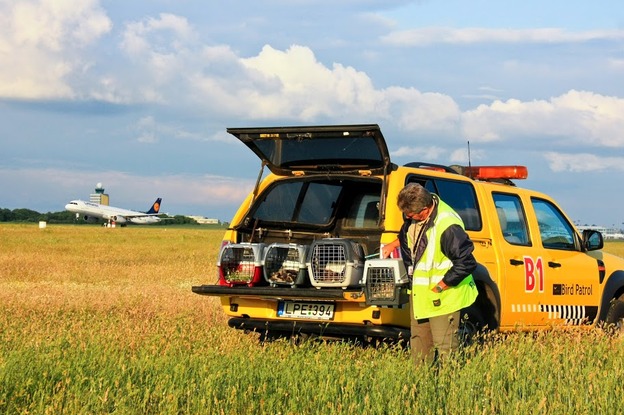Budapest, 2014-6-4 — /Travel PR News/ — No less than 15 protected bird chicks were rescued by Budapest Airport’s bird and wildlife protection specialists from the area of the airport. Every year the airport’s professional game warden collects the newly hatched birds of prey and relocates them to the safety of the Hortobágy National Park. This environmental protection initiative also serves aviation safety purposes.
The recently hatched common kestrel and common buzzard chicks have left their nests at the airport, albeit not on their own initiative. They were collected by József Őri, Budapest Airport’s bird and wildlife specialist, in order to be relocated to the Hortobágy National Park. The move not only serves environmental protection, but also aviation safety purposes, as birds of prey constitute an aviation safety hazard, whilst the airport is also a dangerous environment for them. Their inexperience is a source of danger for themselves, and they are also dangerous to aircraft in case they get sucked into the engines following a collision. This could cause serious technical problems and even a fatal accident. The airport is thus no country for birds of prey.
A bird strike is capable of causing damage running into millions of dollars in aircraft engines. Moreover, these are protected bird species in Hungary, so Budapest Airport is trying to act in an environmentally friendly manner, by protecting not only the aircraft, but also the birds living at the airport. The value of a common buzzard has been set at 25 000 HUF, whilst that of a common kestrel is 50 000 HUF each.
This week a total of 15 young birds of prey were caught and transported to the Górés Bird Rescue Station operated by the Hortobágy National Park Directorate, where the specialists of the national park prepare them for their new habitat and for life without the help of humans, before releasing them. The relocated chicks are fitted with leg bands by the staff of the Hungarian Ornithology and Nature Conservation Society, for subsequent identification and observation.
Save for aircraft, the airport would be an ideal habitat for birds and their food animals, such as gophers and other rodents, as they can live undisturbed in the several hundred hectare green areas of the airport. There is such abundant food available that there are some common kestrel nests where 7-8 chicks hatch on a regular basis instead of the usual 3-4. The early summer is the ideal time for catching birds of prey, since, by this time, the chicks are strong enough to survive transportation to their new habitat, but are not yet able to fly. After leaving the nest in July, in the second half of the summer the chicks begin their lives outside the nest. At first, however, they are rather clumsy, have no experience of flight and are only able to gradually become independent from their parents in terms of acquiring food. Moreover, they are not yet familiar with the area, which means they are more likely to become involved in accidents.
Budapest Airport applies more than ten different bird and wildlife protection techniques, including sonic cannon, trapping and hunting dogs. Most of the actions taken are aimed at keeping birds away from the airport, and especially from the runways, using diverse methods. These include breaking the food chain by relocating gophers, another protected species (Budapest Airport undertook such an initiative last year), to force birds of prey to hunt elsewhere. Budapest Airport’s bird and wildlife specialist regularly patrols airside areas in his specially painted vehicle, playing bird alarm calls from a CD through loudspeakers, causing perching birds to become alarmed and flee. According to the airport’s bird and wildlife specialists, the most efficient method would be to reduce the rodent population on which birds of prey feed, using firearms. However, the competent authorities have not yet authorized such hunting at the airport.
###

